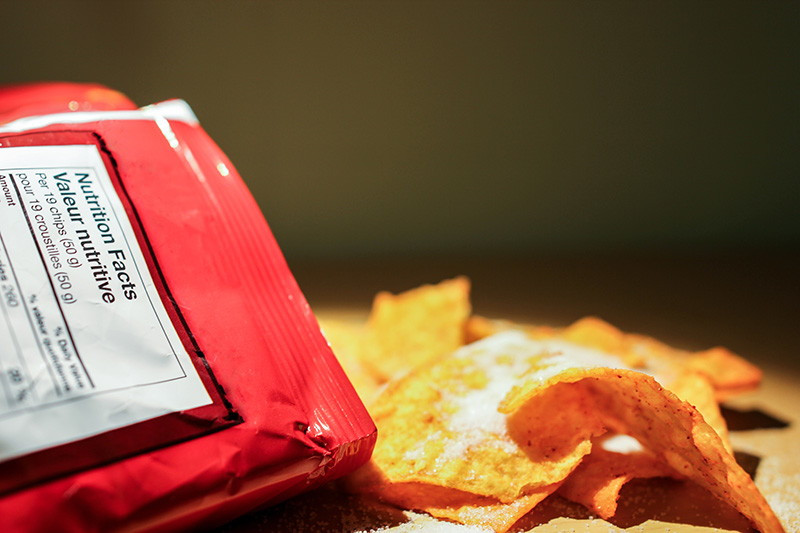Saline salience
Vancouver MP pushes for federal enforcement of high-sodium warnings on food packaging
Pretzel-crunching, mayonnaise-slathering Canadians could soon have one less excuse for maintaining their salt-savouring ways - at least if one federal MP gets her way.
Late last November, Vancouver East MP Libby Davies (NDP) introduced Bill C-460, a private member’s bill that would enforce explicit health warnings on pre-packaged food products with sodium levels exceeding national nutrition recommendations.
The Sodium Reduction Strategy for Canada Act, now midway through its second reading in the House, would pressure food processing and manufacturing companies to conform to existing voluntary standards set out by the Sodium Reduction Strategy, published by the federal government in 2010, by highlighting those that choose not to cut down salt levels in their pre-packaged products.
“(Bill C-460) isn’t developing anything new, it’s saying that the federal government needs to implement the work that’s already been done,” Davies said.
“It doesn’t ban salt. I just want people to be able to make informed choices about what they eat.”
While Davies says the financial cost of implementing her proposal, which will undergo the second half of its second reading in April, has not yet been tallied, it would likely save taxpayers’ wallets.
“Every leading organization in Canada that’s been studying this issue has told us not only about the significant health benefits of reduced sodium in terms of people’s individual health overall, but also the cost to the (healthcare) system,” she said, suggesting “insignificant” expenditures on monitoring food producers would pale in comparison to the costs associated with treatment of cardiac incidents, strokes and kidney problems.
“We have a responsibility to carry this forward.”
Dr. Joyce Slater, a professor at the University of Manitoba’s department of human nutritional sciences, says Canada is in desperate need of a more active approach to kicking its sodium vice.
Manufacturers have little or no incentive to cut down sodium levels in their products and relinquish poorly-informed customers to their saltier competitors, she said.
“Voluntary reduction (on the part of food producers) just hasn’t worked,” Slater said.
“The amount of salt we have in our food has become normal, so people expect foods to taste a certain way. So when you start to reduce that, it affects the sensory quality of those foods.”
According to Slater, it’s this sort of dietary acclimatization that has led to the proliferation of so many common sodium-related misconceptions.
Breakfast cereals, cheese, snacks, condiments/dressings and bread - the latter of which is Canadians’ number one daily source of sodium, Slater says - are among pre-packaged foods one probably wouldn’t expect to blow their daily salt-intake budget on, but likely are.
“ At a certain point, people are going to make their choices regardless of packaging. Are they going to start putting pictures of 700-pound people on bags of Lay’s?
Scott Bagrie
“Sodium is hidden in a lot of places people don’t necessarily think it is.”
Canada needs a “top-down; bottom-up” strategy focusing on education in addition to legislation to address sodium over-consumption across the country, Slater said.
“Canada has really dragged its feet on a lot of these things,” she said.
“We’ve left it up to the marketplace to educate people, and the marketplace has no concern for people’s well-being.”
Slater believes Canada should be looking to the United Kingdom, where high and low-sodium products are easily identified and strict regulations prevent TV commercials for foods high in sodium, fat and sugar from airing at certain times.
According to government research, the U.K. saw a 10 per cent reduction of sodium intake within its population over an eight-year period ending in 2008.
Sagan Morrow, executive director of the Food Label Movement, says there’s room for improvement when it comes to existing nutrition information tables on pre-packaged foods.
Among other non-salt-related problems, including a lack of consistent serving sizes across brands, disclosure of caffeine quantity and the presence of genetically-modified ingredients, the group takes issue with the current labelling system’s method of listing sodium content, which pegs daily values to the uppermost intake limit of 2,300 mg, as opposed to the recommended amount of 1,500 mg.
“I think that a warning message on the label is a fantastic idea,” Morrow said.
“We have warning messages on cigarettes, so why not food packages?”
Kyle Bagrie, a local bartender and confessed potato chip enjoyer, sees the potential benefits of additional warning labels, but remains unconvinced consumers’ choices will be significantly impacted.
“I already know salty snacks aren’t good for me,” he said.
“It’s important we focus on this at an educational level so kids know enough to make informed decisions about what they eat, but at a certain point, people are going to make their choices regardless of packaging.”
To Bagrie, comparing chip packing to cigarette packaging seems overblown.
“Are they going to start putting pictures of 700-pound people on bags of Lay’s?”
To follow C-460’s progress, visit www.openparliament.ca/bills/41-1/C-460.
Published in Volume 67, Number 22 of The Uniter (March 6, 2013)







